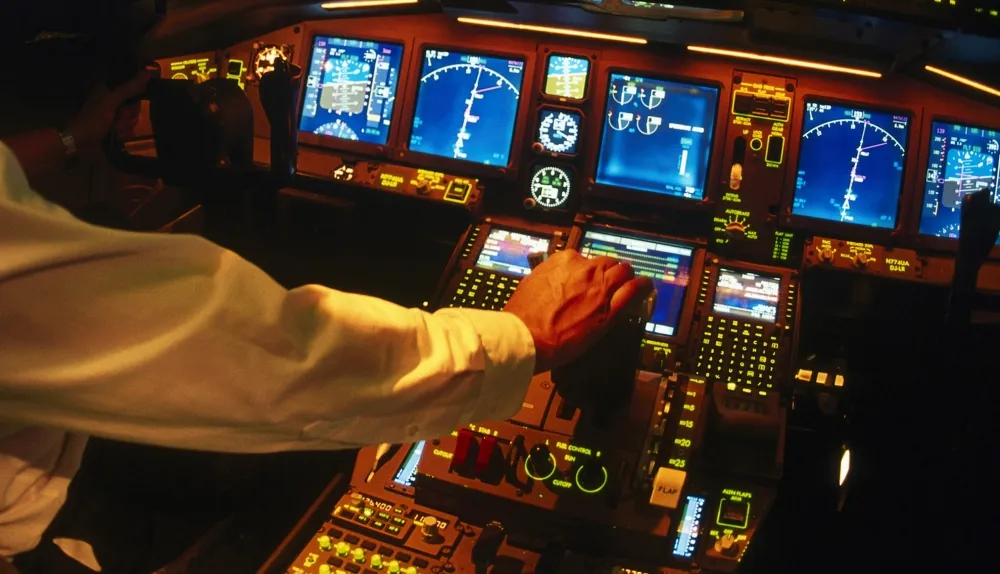
Food poisoning and laser lights are pilot dangers
Feb 17, 2016

Food poisoning poses significant risks to pilots, as it can lead to nausea, vomiting, and impaired cognitive function, making it dangerous to operate an aircraft. Consuming contaminated food or beverages before a flight can result in sudden illness, compromising safety. Additionally, laser lights directed at pilots in flight are a serious hazard. Such distractions can cause temporary blindness or disorientation, endangering both crew and passengers. The combination of foodborne illness and laser incidents highlights the importance of maintaining safety protocols and awareness in aviation, ensuring that pilots remain healthy and focused during their critical responsibilities in the cockpit.
Understanding Food Poisoning Risks for Pilots
Food poisoning is a significant health concern that can impact pilots and their ability to operate aircraft safely. The symptoms of food poisoning, which can include nausea, vomiting, diarrhea, and fatigue, can severely impair a pilot's performance. Given the critical nature of their role, it's essential for pilots to be aware of the risks associated with foodborne illnesses and take preventive measures. Below is a detailed overview of common causes of food poisoning and preventive strategies.
| Common Causes of Food Poisoning | Symptoms | Prevention Methods |
|---|---|---|
| Salmonella | Fever, diarrhea, abdominal cramps | Cook food thoroughly, avoid raw eggs |
| Escherichia coli (E. coli) | Severe stomach cramps, diarrhea (often bloody) | Wash hands, avoid unpasteurized milk |
| Listeria | Fever, muscle aches, gastrointestinal issues | Avoid deli meats, wash fruits and vegetables |
| Norovirus | Nausea, vomiting, stomach pain | Practice good hygiene, sanitize surfaces |
For pilots, the consequences of food poisoning can be dire. Affected pilots may experience decreased cognitive function and impaired motor skills, both of which are crucial for flying. Therefore, understanding food safety and making informed dietary choices is paramount for maintaining health and safety in aviation.
The Threat of Laser Lights to Pilots
Another serious hazard to pilots comes from laser lights. Incidents of laser strikes on aircraft have been on the rise, posing a significant threat to flight safety. A laser strike can temporarily blind or distract a pilot, leading to dangerous situations during takeoff or landing.
According to the Federal Aviation Administration (FAA), laser strikes can cause a range of visual disturbances, from flash blindness to afterimages that can last for several minutes. The most vulnerable moments for pilots are during critical phases of flight, such as approach and landing. Here’s a breakdown of the effects of laser strikes:
| Type of Laser | Potential Effects | Recommended Actions |
|---|---|---|
| Class 1 Laser | No harmful effects | Generally safe |
| Class 2 Laser | Temporary visual disturbances | Close eyes momentarily |
| Class 3 Laser | Risk of permanent damage | Avoid direct exposure |
| Class 4 Laser | Severe eye damage possible | Report incident immediately |
As a preventive measure, pilots should be trained to recognize the potential threats posed by laser lights and adopt strategies for mitigating risks. This includes reporting laser strikes to authorities, using protective eyewear when necessary, and increasing situational awareness during critical flight phases.
Combating Food Poisoning and Laser Light Dangers
To ensure a safe flying environment, pilots must remain vigilant about both food safety and the risks posed by laser lights. Here are some key strategies:
- Food Safety Practices: Always inspect food before consumption, prioritize freshly prepared meals, and stay informed about food recalls.
- Awareness of Laser Strikes: Pilots should maintain a heightened level of awareness in areas known for high incidents of laser strikes and report any suspicious activities around airports.
- Emergency Procedures: Establish clear emergency protocols for both food poisoning symptoms and laser strikes, ensuring all crew members are trained to respond effectively.
In summary, the dual threats of food poisoning and laser lights are critical concerns for pilots. By adopting a proactive approach to food safety and remaining vigilant against laser strikes, pilots can enhance their overall safety and performance. Continuous training and adherence to safety protocols are essential for mitigating these risks in aviation.
As aviation technology and regulations evolve, staying informed about health and safety threats is vital for all pilots. The combination of awareness, education, and preventive measures will significantly contribute to a safer flying experience.
For further information on aviation safety and best practices, pilots are encouraged to consult organizations dedicated to aviation safety and health.
Related Articles

Explore Thailand: The Best Islands to Visit for Paradise, Adventure, and Relaxation

The Ultimate Guide to the Best Islands in Thailand for Your Next Getaway

Do babies need passports? How to get a passport for a newborn

How to get a U.S. passport fast: here’s how to expedite the process

What is Mobile Passport Control: 5 reasons why you should use it

SENTRI vs. Global Entry: A detailed guide

Do you need a passport to go to the Bahamas? Let’s find out

Do you need a passport to go to Mexico? A detailed guide

Do you need a passport to go to Canada? We got the answer

Do You Need a Passport for a Cruise: An Essential Travel Guide

Booster Seat Requirements: All the Rules to Follow in Your Rental Car

What Are the World’s Most Powerful Passports, and How Does Yours Rank?

How to Take a Passport Photo at Home: A Helpful Guide

You've got to have heart! Southwest's new livery

Your opinion: Should water be free on low cost carriers?

Young women bolder than guys as solo travellers
